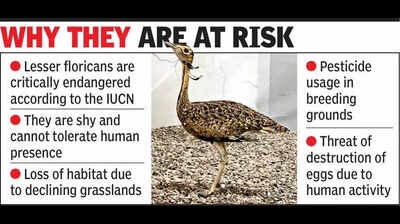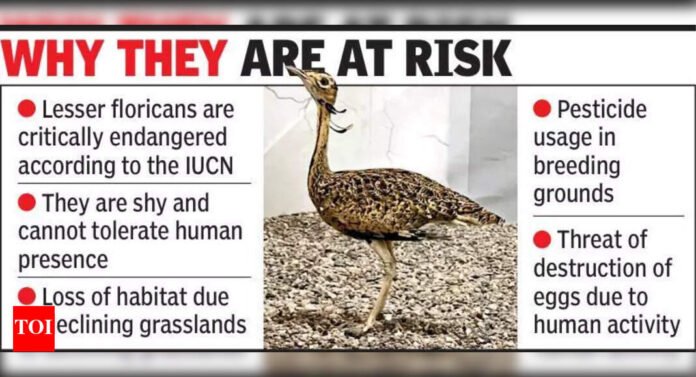Saving the Lesser Florican: A Race Against Time
Conservation Efforts in Gujarat

This monsoon, conservation experts in Gujarat are on a mission. They aim to save the lesser florican, the world’s smallest bustard. This bird is critically endangered. After a complete breeding failure last year, they are trying a new strategy. They are using female decoys to attract male birds.
The Problem
At the Conservation Breeding Centre (CBC) in Velavadar National Park, officials are preparing cloth effigies. These effigies are treated with female scent. The goal is to collect semen from male birds. This technique is borrowed from houbara bustard breeding programs in the UAE.
Last monsoon, there was a courtship crisis. Males performed their courtship dances, but females rejected their advances. They even attacked the males. With fewer than 900 lesser floricans left in India, this issue is serious. It pushes the species closer to extinction.
Current Efforts
Since 2020, the CBC has been working to save the lesser florican. They have saved eggs at risk from rain, farming, and predators. They have successfully hatched 16 chicks using artificial incubation. Currently, 12 of these chicks have reached adulthood. There are six males and six females.
Dr. Yash Baraiya, the center’s veterinary doctor, explains: “The males did everything right last season. They performed their courtship dances, but the females became aggressive. They attacked the males and prevented any mating attempts.”
New Strategies
This monsoon, officials are trying a new approach. They have created a decoy that looks like a female bird. It is made of cotton-stuffed cloth and painted to look lifelike. The decoy is treated with female scent to attract males. This technique has been successful with houbara bustards in the UAE.
The challenge is significant. Dr. Baraiya adds: “The females are laying unfertilized eggs. This shows they are ready to reproduce. Collecting semen from the timid male birds is delicate work. Any disturbance will cause them to shut down completely. But if we can successfully collect semen, we can artificially inseminate the females during their fertile window.”
Learning from Others
The team is also looking to Rajasthan for guidance. Nilesh Joshi, assistant conservator of forests at Velavadar National Park, says: “Rajasthan has achieved remarkable success with artificial insemination in the Great Indian Bustard. We have requested the Gujarat government to arrange for our veterinary team to visit the Sudasri Breeding Centre in Jaisalmer. We want to learn their techniques and adapt them for our florican breeding program.”
Future Plans
Forest officials are not relying on artificial methods alone. They are also planning to introduce wild lesser florican pairs to breed with the captive population. They will adjust pairings based on the birds’ interactions. The center has created a natural forest-like environment using marvel grass. This is the grass the birds prefer for nesting. Artificial shelters provide protected nesting areas. Cameras monitor the birds continuously for signs of illness or injury.
The future of the lesser florican now depends on blending artificial and natural methods. Whatever measures are necessary to ensure their survival will be taken.



